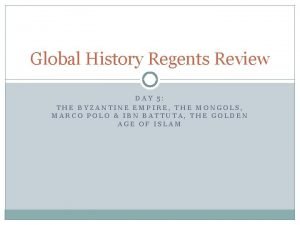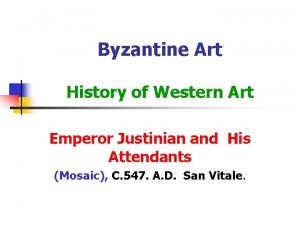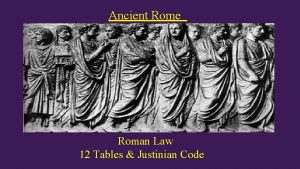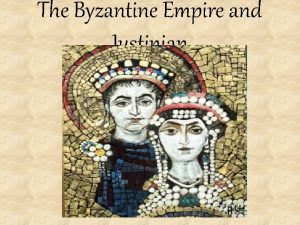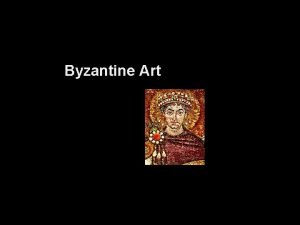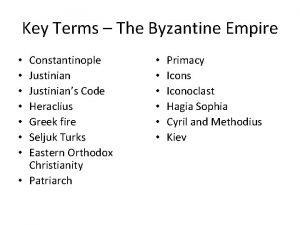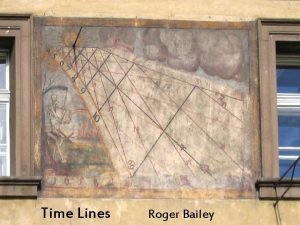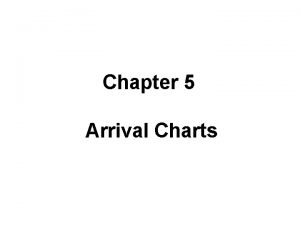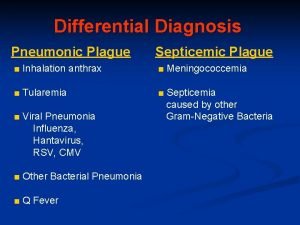The Arrival of The Justinian Plague The Plague











- Slides: 11

The Arrival of The Justinian Plague The Plague of Justinian (AD 541– 542)

The 6 th & 7 th Century • The Plague of Justinian in the 6 th and 7 th centuries is the first known attack on record, and marks the first firmly recorded pattern of bubonic plague. From historical descriptions, as much as 40 percent of the population of Constantinople died from the plague.

Justinian Plague • Pandemic that afflicted the Eastern Roman Empire (Byzantine Empire) • The most commonly accepted cause of the pandemic has been bubonic plague, but recent research suggests that if it was bubonic plague it was unrelated to both present and medieval plague infections.

Plague Reaches Constantinople • The outbreak in Constantinople was thought to have been carried to the city by infected rats on grain boats arriving from Egypt. • To feed its citizens, the city and outlying communities imported massive amounts of grain—mostly from Egypt. • The Byzantine historian Procopius first reported the epidemic in AD 541 from the port of Pelusium, near Suez in Egypt.

Symptoms of the Justinian Plague • A bubo (Greek boubôn, "groin") (plural form: buboes) is the swelling of the lymph nodes. It is found in infections such as bubonic plague, gonorrhea, tuberculosis, or syphilis. It is similar in appearance to a huge blister, and usually appears under the armpit, in the groin or on the neck.

No Room for the Dead • Procopius, in a passage closely modeled on Thucydides, recorded that at its peak the plague was killing 10, 000 people in Constantinople daily. • He noted that because there was no room to bury the dead, bodies were left stacked in the open.

Justinian Profits • As a result of plague in the countryside, farmers could not take care of crops and the price of grain rose at Constantinople. • . He had dedicated significant funds to the construction of great churches, such as Hagia Sophia.

Justinian’s Conquest Blacked Out • . The plague weakened the Byzantine Empire at a critical point, when Justinian's armies had nearly retaken all of Italy. • This evolving conquest could have credibly reformed the Western Roman Empire and reunited it with the Eastern under a single emperor for the first time since 395.

Justinian’s Empire

Justinian & Plague Legacy Emperor Justinian • Justinian's imperial gambit was ultimately unsuccessful. • The troops, overextended, could not hold on. When the plague subsided, his troops regained Italy, but could not move further north. • The eastern empire held Italy for the remainder of Justinian's life yet quickly lost all but the southern part after he died. Justinian Plague • The long-term effects on European and Christian history have been enormous. • Italy was ravaged by war and fragmented for centuries as the Lombards invaded the north.

The Plague of Justinian via History Channel
 Organisational structure of front office
Organisational structure of front office Which title best completes the graphic organizer?
Which title best completes the graphic organizer? Justinian painting
Justinian painting The code of justinian later served as the basis for most
The code of justinian later served as the basis for most Justinian i was famous for rewriting the
Justinian i was famous for rewriting the Byzantine empire successor
Byzantine empire successor Byzantine and islamic art
Byzantine and islamic art Laws of the 12 tables
Laws of the 12 tables Justinian timeline
Justinian timeline Justinian as world conqueror
Justinian as world conqueror Definition of justinians code
Definition of justinians code Justinian images
Justinian images

